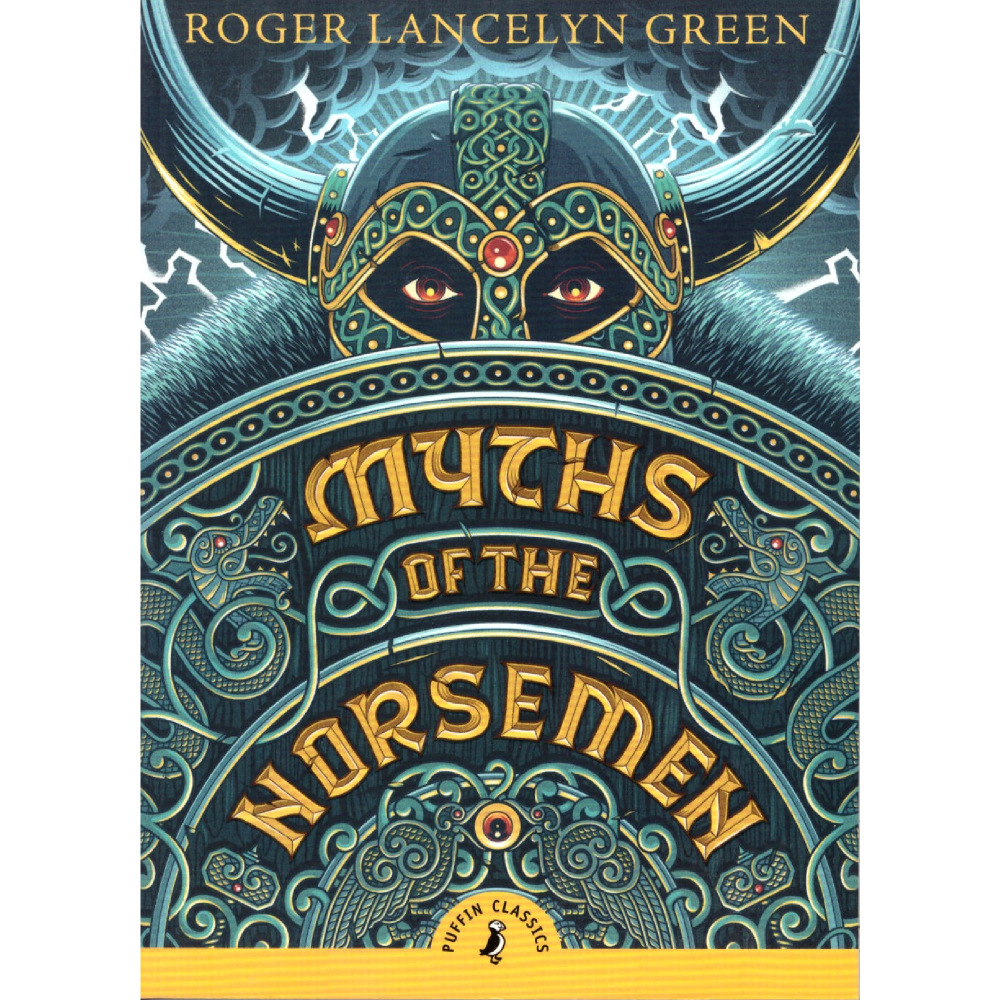What sets Myths of the Norsemen apart from the countless other takes on Norse mythology is the fact that it weaves all the major Eddaic stories about the gods of Asgard into a single continuous narrative. Roger Lancelyn Green bundles the myths into a digestible, novelesque package. I recently wanted to re-familiarize myself with the myths, and I picked up this 60-year-old children’s book. I’ve since gone back to it twice and have enjoyed myself each time.
Neil Gaiman’s own Norse Mythology came out in 2017 and became a bestseller. In that book Gaiman acknowledges Lancelyn Green as his main influence. I was curious, and picked up both books at around the same time. The two books do essentially the same thing, with the same material, only differing according to each author’s style. It’s fascinating to reflect that the Eddaic stories, some of the oldest and most well-trodden works of world literature, still can be re-interpreted and re-experienced, and even make an impact at publishing houses and booksellers. I found reading Gaiman’s and Lancelyn Green’s versions in close succession to be one of the best ways to learn the myths. Comparing and contrasting how each writer took the same story components and reworked and recombined them like Lego pieces was a lot of fun.
Here I’m focusing on Lancelyn Green’s work, which is in some ways my preferred of the two due to its classic style (where Gaiman is generally more witty and mischievous in his treatment). Roger Lancelyn Green was a writer of biographies and fiction, and an Oxford academic working within English Literature. He was a member of the Inklings and a personal friend of C.S. Lewis. My impression is that Myths of the Norsemen displays a degree of shared style with or influence from Lewis, J.R.R. Tolkien, and other Inklings. Lancelyn Green writes his versions of the Norse myths with a high style and diction like that of The Lord of the Rings or, before it, William Morris’s prose romances.
“‘Welcome, thrice welcome to Asgard!’ cried Odin, his face shining with joy. ‘Even the gods grow old, and we have need of youth and strength if we are to fight against the Giants and bring fair gifts to the dwellers in Midgard.
‘Now come both of you into Asgard, and tonight we shall hold your wedding feast with rejoicing such as we have never known before.’
So the wedding of Bragi and Iduna took place that night, and ever afterwards they dwelt among the Æsir. And at the ending of a feast Iduna would glide softly about the banquet hall and give to each of them an apple from her golden casket, and they would eat and feel youth course through their veins more strongly than ever. And how ever many apples were given by Iduna to the Æsir, her casket remained always full.”
By certain techniques Lancelyn Green instills the story with an old-fashioned dignity that I personally enjoy: by using words like “thrice,” “fair,” and “rejoicing;” by using archaic word-order like “now come both of you” and “remained always full;” by using naïve descriptions like “his face shining with joy.” Myths of the Norsemen tells a complete story covering the rise of the gods, their wars with the Giants, their betrayal by Loki, and their downfall. Combine this with Lancelyn Green’s prose style and the end result reads like a classic adventure or fantasy story from the early 20th century, which I would guess is what the author wanted to achieve when he set out to make Norse mythology into a book for young readers more than 60 years ago. The style also means that, provided you’re familiar with and enjoy those conventions I mentioned above, Myths of the Norsemen has aged remarkably well. I’d recommend it as maybe the best entry point into Norse mythology even now.
Myths of the Norsemen
Roger Lancelyn Green
Puffin, 2017 (first published 1960 as The Saga of Asgard)

